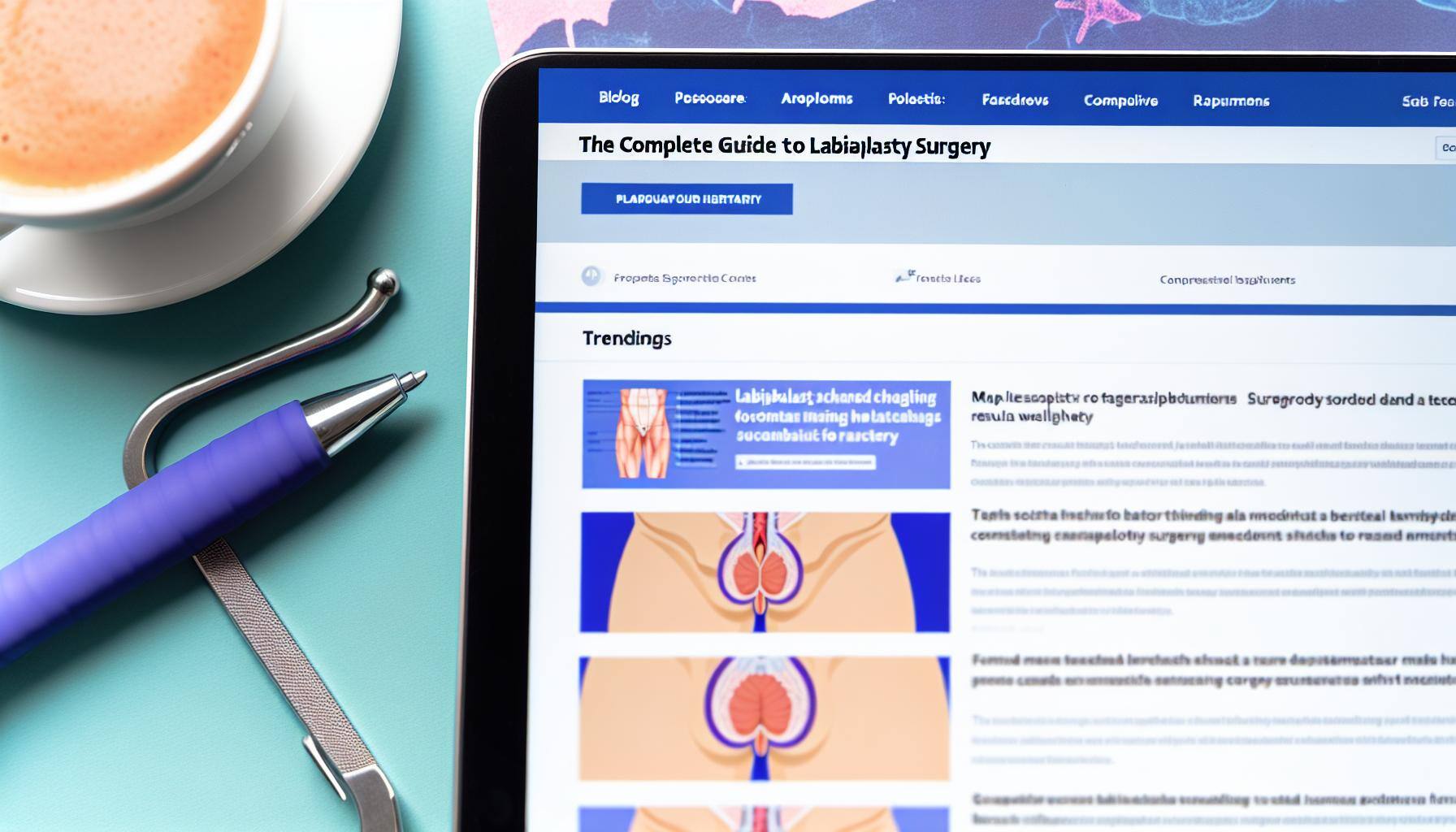At Moorgate’s Gynaecology clinics we see more and more women seeking out treatments and surgery to improve the look of their vagina. Although these procedures have always been popular, they are on the rise more than ever before. One such procedure is labiaplasty surgery. Here we will explore this surgical procedure from start to finish, to give you the complete guide to labaiaplasty surgery
What does this surgery actually do ?
Firstly, you may hear this surgical procedure called a labiaplasty or labia reduction, essentially it’s the same thing.
Specifically, this operation is about changing the shape and/or size of the labia minora. The labia minora are the inner folds of the vulva. It is usually performed by either a Gynaecologist ( an expert in female genital medicine and surgery ) a Plastic Surgeon ( an expert in all matters cosmetic surgery ) A Urologist ( an expert in urinary and genital medicine ). This is not an exhaustive list of course and even many general surgeons will carry out this procedure.
Why would you want your labia reduced ?
The reason women choose labiaplasty surgery are for three distinct reasons, or a combination of the three. Firstly, many women experience discomfort when they have protruding labia. This has an effect in many areas of their lives. For example, in sorting activities such as cycling or horse riding. It can cause pain or discomfort in sexual activity. For most women with protruding labia they just don’t like the way it looks. Because of this it can cause anxiety and a reluctance to form relationships for fear of embarrassment ( or pain and discomfort if the issue causes this in sexual activity )
Labiaplasty : the surgical options
There are two well established surgical techniques to change the appearance of the inner labia. They are known as the trim method and the wedge method. You may ask which is the best method. To be honest, there is no best method, although some surgeons may tell you so , depending on whch method that they favour personally, or which method they find gives the best results based on their own experience. You should discuss both options with your Specialist to establish the right method for you.
The trim method of labiaplasty simply removes excess labial tissue from the edge of the labia itself. The wedge method involves removing a wedge shaped piece of excess labial tissue from the centre of the labia.
Your Consultation with the Surgeon
Nothing happens of course until you have had a consultation and assessment with your surgeon. This is a legal requirement in the United Kingdom. You cannot have a consultation and a labiaplasty surgery on the same day either. Best practice dictates to Surgeons that ideally two weeks should elapse at least between the consultation and operation. This is to give the patient enough time to reflect on the consultation and make an informed decision.
Going for a consultation and examination on such an intimate area can be daunting. Try to remember that Doctors are used to seeing patients for genital problems and procedures every day. They will know how nervous you may feel and most will be welcoming and they will do their best to put you at ease as much as possible.
The consultation usually begins with an in depth discussion about the problems you are facing with your labia. Expect to hear about the potential risks and complciations of the procedure as well as the benefits of the surgery.
This is your chance too to fully explain the difficulties you are facing, and how your labia is affecting your life. When explanations are complete the Surgeons will give you the opportunity to ask any questions. Ideally, you will have written these down as you may easily forget them if you don’t.
If you decide that you would like to proceed with surgery then there are some practical steps that you will be asked to take at the outset. These include stopping smoking for at least six weeks before the surgery. You should also stop for six weeks after surgery. Smoking will increase your risk of an infection after labiaplasty surgery. A detailed medical history will be taken by the surgeon or one of his team. Certain medications may have an effect on your anaesthesia so listen to specific instructions on what take and not take prior to the surgery date. Assuming the surgery will be carried out under general anaesthetic, you will need to arrange someone to collect you from the hospital ( no, you cannot go home alone ! )
In the operating theatre
The first thing that will happen is the Anaesthetist will ensure you are asleep for the procedure by administering the general anaesthetic. When this is done you are asleep within seconds.
The surgeon will proceed depending on the techniwue chosen for the surgery, the trim or wedge method.
Labiaplasty typically takes around one hour and afterwards you will taken to the recovery room for observation before being taken back to your bed.
The time spent in hospital will vary depending on how quickly you recover. Generally speaking, you will be discharged between two and three hours after the surgery. The hospital will not discharge you until they are sure you are fit to leave.
Most hospitals will discharge you with a course of antibiotics to take for about one week , and some pain relief medication. You will also have some post-operative instructions to follow. An appointment will be made for follow up with your Surgeon.
When you get home
Make sure you have arrange for some time off work. In most cases one week should suffice. Make sure that you take the antibiotics, and take the complete course. Take it easy in the first few days because you might feel a bit tired or even a bit low in the first few days after surgery. This is common after a general anaesthetic.
At first you will start to notice some swelling and bruising appear. This is perfectly normal and will subside in the coming weeks. If things get quite swollen you can use ice to reduce the swelling and help with discomfort. Be sure to wrap the ice in a tea towel , or similar. Don’t apply ice directly to the vaginal area.
Avoid any sporting activities for about six weeks. Similarly, you should avoid sexual activity for the same amount of time. It is going to take just a little time for everything to settle down.
Very important is to keep the area very clean. Again, we want to avoid the risk of infection as much as possible.
What could do wrong ?
Lets start by saying that most women who have labiaplasty surgery do so without any complications. However, all surgical procedure carry some element of risk. Firstly, there are the accepted risks of any operation such as infection, bleeding , bruising and swelling, changes in sensation, scarring, asymmetry. Most patients who undergo labiaplasty surgery only experience transient side effects and go on to make a full recovery in around six weeks.
Frequently asked questions
Is labiaplasty a safe procedure to do?
Most patients who have labiaplasty experience no significant or lasting complications. We would suggest making sure that your Surgeon has experience in this procedure and is either a Gynaecologist, Urologist or Plastic Surgeon. Your medical history will be taken into account when you meet the medical team to ensure that you are fit and well for the procedure
How much does labiaplasty surgery cost and is finance available ?
At the time of writing this surgery costs £ 4600. Finanace is available with no deposit to pay and up to five years to pay back. The interest rate depends on your credit score, and good and bad credit cases are considered. Its easy to apply just get in touch and our patient co-ordinators can o this with you over the phone,
Will I still have the same sexual pleasure during intercourse ?
Many women report better sexual sensations because the discomfort that was there before has now gone after the surgery.
Is labiaplasty permanent ?
Most women have labiaplasty surgery only once. However, remember that you cannot stop the ageing process.
.png?width=319&height=105&name=logo%20(1).png)








LEAVE A REPLY Cancel Reply
Your email address will not be published. Required fields are marked *